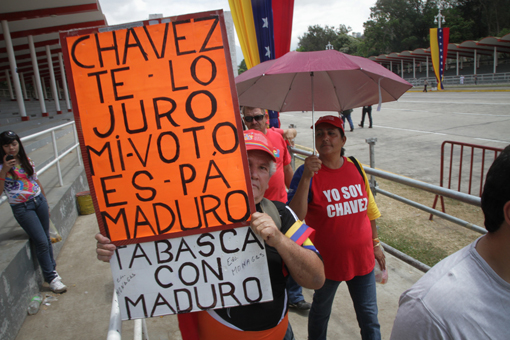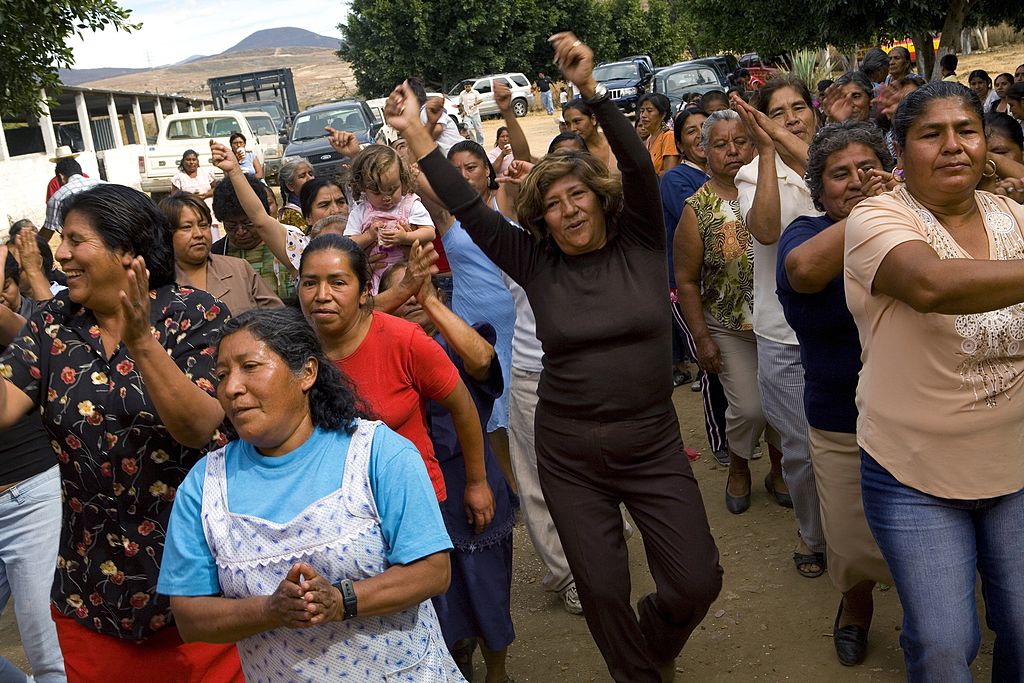In a recent opinion piece, Venezuelan-American author Eva Golinger proclaimed the late Hugo Chávez was “a maker of dreams.” Chávez, she says, dreamt of eradicating poverty, and made those dreams come true. Much of what has been written—including by people critical of his legacy—repeats the same conclusion: Chávez improved the lives of the poor.
Sadly, this is not entirely true. While nobody can deny Hugo Chávez gave poor people money, goods and social services, some would argue he didn’t make their lives better. In several ways, the poor are worse off than they were in 1999, when Chávez took office. An honest assessment of Chávez’s legacy should take this into account.
When people talk about how Hugo Chávez helped the poor, they point to three basic things. The first is that the Chávez years saw a decrease in the percentage of people living below the poverty line. The second is that he gave them increased and improved social services. And finally, people claim he “empowered them” by caring for them and elevating their self-esteem. All of this may be true, but it is not enough to support a claim that he improved the lives of the poor.
Thanks to an unprecedented influx of petro-dollars, the disposable income of poor families rose significantly in the latter portion of the Chávez era. However, the poor now have less access to quality jobs. Close to half of Venezuelans of working age labor in the informal economy. While public payrolls have increased to roughly 2.5 million people, the consensus is that this is clearly unsustainable. The number of private employers has decreased by about a third, according to government statistics.
More importantly, job prospects for the poor are dim. Much of this is reflected in Venezuela’s poor performance in terms of GDP. While the economy has indeed grown under Chávez, its performance is inferior to that of many of its neighbors.
An assessment of poor families’ lives falls short if it only measures their income. One also has to take into account how poor families’ net asset positions have changed.
In 2002, public debt was such that each Venezuelan owed approximately $1,400 to the nation’s creditors. As of 2010, the per capita debt burden stood at roughly $3,400. While one may quibble with the exact figures—Venezuela’s debt position is notoriously tricky to calculate, thanks to currency exchange controls and lack of transparency in public finances—it is undeniable that Chávez dumped a large amount of debt on the backs of poor Venezuelan families. Part of that debt was used to finance foreign policy priorities such as giving oil at discounted prices to Cuba, while another large part was used to subsidize the rich as explained below.
Another claim about Chávez and the poor is that he increased their access to social services. Much of these claims, however, are a bit overblown.
For example, in 2006, Harvard economist Francisco Rodríguez and his IESA colleague Daniel Ortega found that Hugo Chávez’s claims to have “eradicated” illiteracy in the country were simply not true. The authors found that Chávez’s flagship literacy program had been incredibly expensive and that its impact was much lower than expected. Rodríguez extended his analysis to other social programs and concluded “[t]he ‘Chávez is good for the poor’ hypothesis is inconsistent with the facts.”
Another significant aspect of poor people’s lives calls into question the claims of Chávez’s backers. Poor Venezuelans are now three times more likely to be murdered than they were in 1999, and when confronted with this reality, Chávez himself was frequently dismissive, saying it was a consequence of “capitalism,” “alcoholism,” or other “isms.”
Poor people now spend more time in traffic than they did 14 years ago—another consequence of “capitalism,” according to Chávez. And while the Chávez government invested in primary care facilities in poor neighborhoods, Venezuela’s public hospitals and schools continue to be mismanaged. The quality of public education is not even measured.
A fair assessment of how Chávez affected the poor should include references to his subsidies to the rich and well connected. Venezuela is famous for giving away gasoline (practically) for free. This subsidy is highly regressive, and it costs poor Venezuelans billions of dollars per year. Even the popular social program Mercados de Alimentos, C.A. (Food Markets—MERCAL), the government-subsidized supermarket chain, is frequently singled out for corruption and for providing subsidies to middle-class families who should not be the target of food assistance.
Chávez also frequently touted his currency exchange controls, administered through the Comisión de Administración de Divisas (Commission for the Administration of Currency Exchange—CADIVI). But by selling dollars at the official rate—which currently is a third of the black market rate—Chávez was, in effect, subsidizing the wealthy—importers, travelers abroad, and large multinational corporations wishing to repatriate their local dividends. This subsidy will likely represent tens of billions of dollars when all is said and done.
The poor today have more cash and social services but fewer prospects, less safety and more debt than they did before Chávez came to power. Given the extraordinary income Chávez enjoyed during his tenure, his presidency can probably be characterized as a missed opportunity, a once-in-a-generation chance to permanently improve the lives of the poor that was sadly lost.








